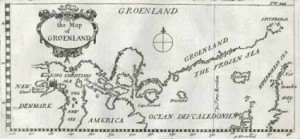Guillaume Faye
Le coup d’Etat mondial:
Essai sur le Nouvel Impérialisme Américain
(Global Coup d’Etat: An Essay on the New American Imperialism)
Paris: L’Æncre, 2004
Fas est ab hoste doceri. (It is permitted to learn from the enemy.) — Ovid
This past spring, for the sixth time in six years, Guillaume Faye has published a book that redefines the political contours of European nationalism (“nationalism” here referring not to the defense of the nineteenth-century “nation-state,” but of Magna Europa). Like each of his previous works, Coup d’Etat mondial speaks to the exigencies of the moment, as well as to the perennial concerns of the European ethnos. In this spirit, it offers a scathing critique of the “new American imperialism” and the European anti-Americanism opposing it, while simultaneously contributing to a larger nationalist debate over Europe’s destiny. Framed in terms of Carl Schmitt’s Freund/Feind designation, this debate revolves around the question: Who is Europe’s enemy? For Schmitt, this question is tantamount to asking who threatens Europe’s state system and, by implication, who threatens its unique bioculture.
During the Cold War, the more advanced nationalists rejected the conventional view that Soviet Communism was the principal enemy and instead designated the United States. This is evident in the works of Francis Parker Yockey, Jean Thiriart, Adriano Romualdi, Otto Strasser, Alain de Benoist, and in the politics of the sole European statesman to have defended Europe’s independence in the postwar period: Charles de Gaulle.
It was not, however, America’s occupation of postwar Europe that alone aligned these nationalists against the U.S.—though this was perhaps cause enough. Rather, it was the liberal democratic basis of America’s postwar order, whose deculturating materialism was seen as corrupting the biocultural foundations of European life. The Soviets’ brutal occupation of Eastern Europe may therefore have broken the bodies of those opposing them, but America, for nationalists, threatened their souls.
Today, this anti-American opposition persists, but has come to signify something quite different. What has changed, and this starts to be evident in the late 1980s and even more so in the ’90s, is Third World immigration, which puts the American threat in an entirely altered perspective. In nationalist ranks, Faye stands out as the principal proponent of the view that Islam and its nonwhite immigrants now constitute Europe’s enemy and that America, though still an adversary, has become a less threatening menace.
For Faye, the New American Imperialism (NAI) associated with the Bush administration supplants the earlier, more implicit imperialism of the Cold War era. This imperialism, though, is not specifically Bush’s creation, for it arose in the Cold War’s wake and took form in subsequent aggressions on Somalia, Bosnia, Kosovo, Afghanistan, and now Iraq.
The older imperialism had a Wilsonian facade, legitimated with moral pronouncements and a naive, but occasionally sincere, effort to regulate the world according to its liberal principles. By contrast, the NAI rejects this “softer” (and actually more effective) variant of American power for a policy that aggressively asserts U.S. military might irrespective of “world opinion.” It ceases thus to pursue its interests through international organizations embodying its liberal world view and instead embraces a militaristic unilateralism that defies international convention in the name of America’s “vital interests.”
Against the arguments of its apologists, Faye claims the NAI is not the hard-headed, morally clear assertion of American power that they make it out to be, but rather a puerile, utopian, and unrealistic one based on the notion that tout est permis!— anything goes. The United States may be the world’s dominant power, but it lacks what Aristotle and the conservative tradition of statecraft understood as the enduring basis of power: prudence. For in confusing dominance with omnipotence, the NAI’s neoconservative executors, like all who draw the wages of hubris, inadvertently earn themselves—and America—the likelihood of a tragic fall.
In this vein, U.S. vital interests (what the present administration defines in Zionist, militarist, and globalist terms) are treated as the sole permissible basis of national sovereignty. A state—”rogue” or otherwise—that exercises its autonomy, fabricates weapons of mass destruction (i.e., weapons capable of ensuring its sovereignty), or resists Washington’s dictates is deemed an enemy and risks reprisal. Implicit in this redefinition of America’s world role is the assumption that the United States is the world’s gendarme, its lone sovereign power, obliged to uphold a law which is synonymous with its own strategic interests.
Moreover, the NAI’s assumption that the United States has the capacity to dominate the planet is, if nothing else, simpleminded. Its proponents might think they are breaking with the legalistic or Kantian postulates of liberal internationalism by pursuing hegemonist objectives with military methods (which, in itself, would be unobjectionable), but this readiness to substitute raw power for other forms of power (that is, for power exercised in the “thieves’ den” of the United Nations or through international regulatory agencies the United States created after 1945) is informed by the Judeo-Protestant illusion that America does God’s work in the world. This cannot but disconnect them from all they seek to dominate, for in applying their illusory principles to an intractable reality, they cannot but lurch from disaster to disaster.
The NAI’s peculiar mix of political Machiavellianism and millennial Calvinism has been especially prominent in Iraq, the conquest of which was to be a cakewalk. Not only did Bush and his advisers have no idea of what they were getting into, they completely misread the capacities of American power. If the U.S. Air Force possesses unparalleled firepower, the modern American soldier cannot fight on the ground. With half its army occupying a country with no military capacity and its helicopter gunships, Bradley Fighting Vehicles, and body-armored ground troops arrayed against lightly-armed and untrained insurgents, it is stretched to the breaking-point.
Despite its imperialist ambitions, America is not Rome. Faye argues that it is more like a house of cards—an ephemeral economic-political enterprise—lacking those ethnic, religious, and cultural traits that go into making a great people and a great power.
As any white Californian will attest, there is, in fact, no longer anything particularly American about America, only people like the turbaned Sikh who drives the local cab, the Mexican illegal who mows our neighbors’ lawn, the Indian programmer who replaces his higher-paid white counterpart, the Chinese grocer who sells us beer and cigarettes late at night, the African who empties the bedpans in our nursing homes, the Africans of American birth who run our cities and public agencies, and the white zombies insulated in distant, manicured suburbs, where the voices of children are rarely heard. For Faye, this disparate hodgepodge is not a nation in any historical sense, only an artificial social system, whose members, as Lewis Lapham has written, are “united by little else except the possession of a credit card and password to the internet.” Why, it seems almost unnecessary to ask, would an American Gurkha risk his life for such an entity?
The military technology of Imperial America undoubtedly lacks an equal, but its centrality to U.S. power, Faye claims, testifies to nothing so much as the enfeebled cognitive abilities of its elites, who think their computerized gadgetry is a substitute for those primordial human qualities that go into making a people or a nation—qualities such as those that steeled not just Rome’s republican legions, but the Celtic-Saxon ranks of the Confederacy, the gunmen of the IRA, the indomitable battalions of the Wehrmacht, and the Red Army of the Great Patriotic War. In the absence of these qualities forged by blood and history, the NAI’s space-age military (whose recruiters now slip beneath the border to find the “volunteers” for its imperial missions) is a paper tiger, no match for a nation in arms—not even a pathetic, misbegotten nation like Iraq.
The hubris-ridden neoconservatives leading America into this costly adventure from which it is unlikely to recover did so without the slightest consideration of the toll it would take on the country’s already stressed and overtaxed institutions. Fighting for objectives that are everywhere challenged and with troops that are not only afraid to die, but have no idea of what they are dying for, the only thing they have actually accomplished is what they set out to combat: For they have inflamed the Middle East, enhanced Islam’s prestige, augmented bin Laden’s ranks, accelerated the proliferation of weapons of mass destruction, and turned the whole world against them.
Finally, Faye depicts the NAI as America’s last bloom. Both domestically and internationally, the signs of American decline, he observes, are more and more evident. For all that once distinguished America is now tarnished. Its melting pot no longer assimilates, its mixed-race population is inextricably Balkanized, its state is increasingly maniacal in its anti-white, anti-family, anti-community policies, and its market, the one remaining basis of social integration, is in serious difficulty, burdened by massive trade imbalances, unable to generate industrial jobs, hampered by astronomical debts and deficits, and increasingly dependent on the rest of the world. Even the country’s fabled democracy has ceased to work, with elections decided by the courts, fraudulent polling practices, and a pervasive system of spin and simulacrum. The virtuality of the political process seems, actually, to reflect nothing so much as the increasingly illusory authority of its reigning elites, whose oligarchic disposition and incompetent management necessitates a system of smoke and mirrors.
Internationally, America faces a no less bleak situation. Faye points out that the almighty dollar, for sixty years the world’s reserve currency, is now threatened by the euro (which means the country will soon no longer be able to live on credit); the European Union and Asia’s rising economic colossus are undermining its primacy in world markets; it faces the wrath of a billion Muslims worldwide and does nothing to stem the Muslim immigration to the United States; its occupation of Iraq is causing it to hemorrhage monetarily, morally, and militarily; and, not least, its image and integrity have been so damaged that raw power alone sustains its fragile hegemony.
Unlike the implicit imperialism of the Cold War era, the NAI is openly anti-European. In this vein, it opposes the continent’s political unification; treats its allies, even its British poodle, with contempt; practices a divide and conquer tactic which pits the so-called New Europe against the Old; and pursues a strategic orientation aimed at containing Europe and keeping it dependent on the U.S. security system.
In parallel with this anti-Europeanism, there has developed in Europe what Faye calls an “obsessional and hysterical anti-Americanism” (OHAA). He sees this development as so destructive of Europe’s self-interest that he factitiously suggests that it is probably subsidized by the CIA. For this anti-Americanism bears little relation to earlier forms of French anti-Americanism, which sought to defend France’s High Culture from the subversions of America’s culture industry. Nor are its right-wing proponents firmly in the pale of the “new revolutionary nationalism,” which designates liberalism’s cosmopolitan plutocracy as the chief enemy and resists its denationalization of capital, population, and territory. Instead, this OHAA not only does nothing to advance the European project, its fixation on the NAI inadvertently contributes to the Islamization and Third Worldization of the continent, hastening, in effect, its demise as a civilizational entity.
Touching the government and numerous nationalist tendencies, in addition to the perennially anti-identitarian Left, this OHAA is informed by a simpleminded Manichaeanism, which assumes that America’s enemy (Islam) is Europe’s friend. By this logic, America is depicted as a source of evil and Islam as a possible savior. In effect, these anti-Americans adopt not just Islam’s Manichaean world view, but that of the Judeo-Protestants who make up Bush’s political base. For like the neoconservative publicists and propagandists advising the administration and like the mullahs shepherding their submissive, but fanatical flocks, they too paint the world in black and white terms, the axis of good versus the axis of evil, with the enemy (America or Islam) seen as the source of all evil and our side (America or Islam) as the seat of all virtue.
And just as the liberal/neocon image of America is Hebraic, not Greco-European, these European anti-Americans carry in their demonstrations the flags of Iraq, Palestine, Algeria, and Morocco, shout Allah Akbar, and affirm their solidarity with Islam—all without the slightest affirmation of their own people and culture. This simple-minded Manichaeanism influences not only left-wing immigrationists bent on subverting Europe’s bioculture, but French New Rightists around Alain de Benoist, revolutionary nationalists around Christian Bouchet, traditionalists around the Austrian Martin Schwartz and the Italian Claudio Mutti, and various Eurasianists, as well as many lesser known tendencies. Worse, the politicians catering to this anti-Americanism oppose the NAI less for the sake of Europe’s autonomy than for that of its large Muslim minority. They thus refuse to be an American protectorate, but at the same time display the greatest indifference to the fact that they are rapidly becoming an Islamic-Arabic colony: Eurabia.
The economic and cultural war the United States wages on Europe, Faye stresses, ought to warrant the firmest of European ripostes, but to feel the slightest solidarity with Islam, even when “unjustly” attacked, is simply masochistic—for, if the last 1400 years is any guide, it seeks nothing so much as to conquer and destroy Europe. American plutocratic liberalism may be responsible for fostering transnational labor markets that import millions of Third World immigrants into the white Lebensraum, but if the latter are ignored for the sake of resisting the former, the end result may soon be that there will no Europeans left to defend. (Medically, this would be equivalent to fighting typhoid by ignoring the infectious bacillus assaulting the sufferer and instead concentrating exclusively on eliminating the contaminated food and water that transmit it —in which case the disease would be eradicated, but the patient not live to appreciate it).
The OHAA’s simpleminded politics, Faye argues, ends up not just misconceiving Europe’s enemy, but sanctioning its colonization, including the colonization of its mind. Like the “poor African” who is routinely portrayed as the victim of white colonialism, this sort of anti-Americanism makes the European the victim of U.S. imperialism. As we know from experiences on our side of the Atlantic, such a mentality takes responsibility for nothing and attributes everything it finds objectionable to the white man, in this case the American.
More pathetically still, in designating the United States as an irreconcilable enemy and Islam as a friend, these anti-Americans inadvertently dance to Washington’s own tune. Based on his La colonisation de l’Europe: Discours vrai sur l’immigration et l’Islam (2000) and in reference to Alexander del Valle’s Islamisme et Etats-Unis: Une alliance contre l’Europe (1999), Faye contends that since the early 1980s U.S. policy has aggressively promoted Europe’s Third Worldization—through its ideology of human rights, multiculturalism, and multiracialism, through its unrelenting effort to force the European Union to admit Turkey, but above all through its intervention on behalf of Islam in the Yugoslavian civil war. In all these ways fostering social, religious, cultural, and ethnic divisions that neutralize Europe’s potential threat to its own hegemony, it seeks to subvert European unity.
Looking to the Arab world to counter U.S. imperialism can only lead to national suicide. Those who advocate Europe’s alliance with the Third World are thus for Faye not simply naive, but neurotic. America may be a competitor, an adversary, a culturally distorting force, it may even be the principal international force for liberal cosmopolitanism, but in relation to the ethnocidal threat posed by Islam it is almost entirely innocuous. Europeans can always recover from the deculturation that comes from American domination, but not from the destruction of their genetic heritage, which Islam promises. Faye suggests that this anti-American neurosis, like the classic textbook pathology, designates America as its enemy for fear of acknowledging the danger looming under its very nose. As such, the anti-American Islamophiles refuse to see what’s happening in Europe, whose soft, dispirited white population is increasingly cowed by Islam’s conquering life-force. For however much American policy assaults Europe, it does not constitute the life-and-death danger which the invading Islamic colonizers do. To think otherwise is possible only by ignoring the primacy of race and culture. Instead, then, of pursuing chimerical relations with people whose underlying motive is the destruction of Europe as we know it, it would be wiser, Faye claims, for Europeans to view what’s happening in Iraq as the Chinese and Indians do: with cynical detachment and an eye to their own self-interest.
The greatest danger to Europe, and this idea is the axis around which Faye’s argument revolves, comes from the Islamic lands to the “South,” whose nonwhite immigrants are presently colonizing the continent, assuming control of its biosphere, and altering the foundations of European life. For European nationalists and governments to treat America, with its shallow, provisional power, as the enemy and Islam, with its nonwhite multitudes pressing on Europe’s borders, as its friend is the height of folly.
Not coincidentally, such an anti-Americanism is first cousin to the anti-white sensibility one finds in American liberal and neoconservative ranks. For just as those who try to convince us that America is a “creed,” not a white nation, these anti-Americans allying with Islam to fight the ricains betray their patrie—treating it as an abstraction and not a people. If Americans would be better off using their troops to defend their porous border instead of playing cowboy in Mesopotamia, as we white nationalists believe, Europeans loyal to their heritage would do better, Faye advises, to resist rather than to make common cause with those who are presently invading their lands.
To Faye, there can never be a total rupture between Europe and white America, given the blood bonds linking them. They might pursue divergent interests, over which dispute is inevitable, but the racial and cultural differences separating Europe from the Islamic world are insurmountable. In this spirit, he predicts that “the great clashes of the 21st century will not pit the United States against the rest of the world, but rather the Whitemen of the North against all the other racial-civilizational blocs.”
The culturally noxious effects of the liberal-democratic order of money imposed on Europe after 1945 caused European nationalists to define themselves in opposition not just to American-style liberalism, but to America as a nation. For those nationalists who continue to uphold this line, Third World immigration (which they do not favor) is viewed as an offshoot of a techno-economic system that dismisses biocultural qualities for the quantifying ones of the liberal market.
Only in fighting this system, and its chief sponsor, the United States, will Europe, they believe, be able to defend its heritage and its destiny. The Third World immigrants experiencing the deracination that comes with transnational labor markets cannot, then, be Europe’s enemy, for they too are its victim. Besides, their traditionalist, premodern culture makes them prospective allies in what is seen as a common struggle against America’s “cultureless civilization.”
But even in granting that there is a certain logic—even a certain justice—to this position, it rests upon two false premises, which Guillaume Faye has been almost alone in Europe in polemicizing: 1) that culture trumps race and 2) that race is unrelated, if not irrelevant, to culture.
His Coup d’Etat mondial offers, then, a powerful antidote to this false and potentially fatal reasoning. It demystifies the new American imperialism, revealing its tenuous character. It exposes the self-destructive character of an opposition refusing to recognize Europe’s real enemy. And, most important, in designating this enemy—the nonwhite colonizers who hope to turn Europe into a dar-al-Islam—it designates what is the single, most unavoidable, and absolutely necessary duty of white people everywhere: the defense of their homelands.
Source: TOQ, vol. 5, no. 3 (Summer 2005)



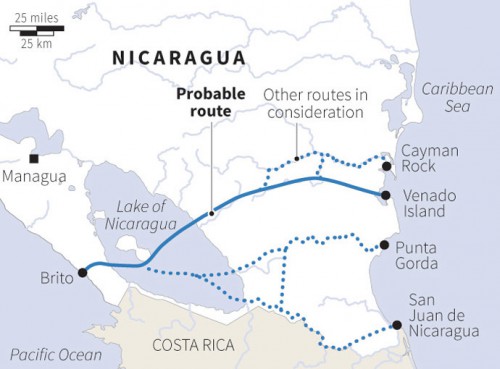

 del.icio.us
del.icio.us
 Digg
Digg

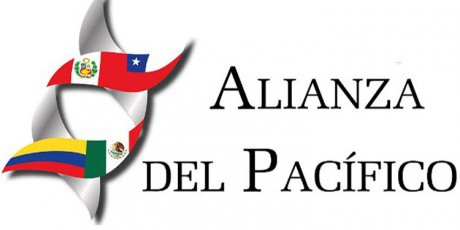


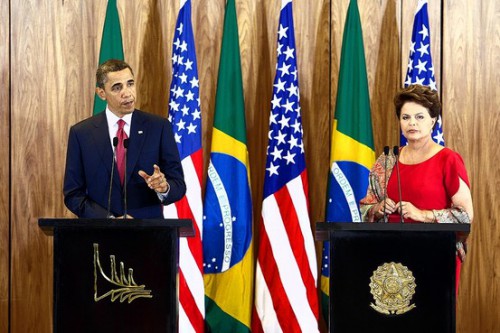
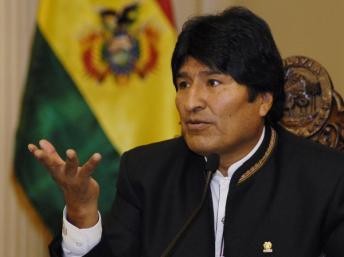

 Durant l’été 1942 – alors que les Allemands étaient au sommet de leur puissance, totalement inconscients de l’approche de la tempête de feu qui allait transformer leur pays natal en enfer – le philosophe Martin Heidegger écrivit (pour un cours prévu à Freiberg) les lignes suivantes, que je prends dans la traduction anglaise connue sous le titre de Hölderlin’s Hymn “The Ister”: [1]
Durant l’été 1942 – alors que les Allemands étaient au sommet de leur puissance, totalement inconscients de l’approche de la tempête de feu qui allait transformer leur pays natal en enfer – le philosophe Martin Heidegger écrivit (pour un cours prévu à Freiberg) les lignes suivantes, que je prends dans la traduction anglaise connue sous le titre de Hölderlin’s Hymn “The Ister”: [1] 

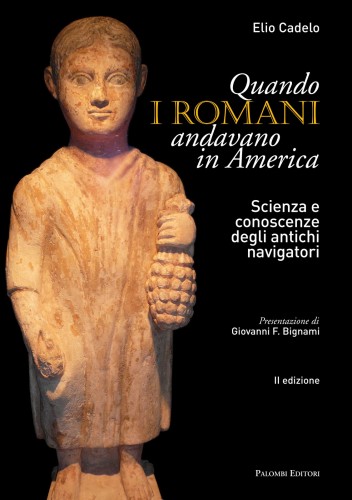 En somme, on peut croire désormais que bien avant les Vikings, les Romains fréquentaient le continent américain. De nouveaux indices archéologiques convaincants semblent confirmer désormais que les navires romains entretenaient des relations commerciales avec l’Amérique. Elio Cadelo, vulgarisateur scientifique, l’a annoncé lors d’une conférence tenue en marge d’une conférence de presse à Bologne portant sur la série cinématographique archéologique “Storie del Passato”. Le documentaire “Quand les Romains allaient en Amérique” dévoile des choses surprenantes sur les anciennes routes de navigation.
En somme, on peut croire désormais que bien avant les Vikings, les Romains fréquentaient le continent américain. De nouveaux indices archéologiques convaincants semblent confirmer désormais que les navires romains entretenaient des relations commerciales avec l’Amérique. Elio Cadelo, vulgarisateur scientifique, l’a annoncé lors d’une conférence tenue en marge d’une conférence de presse à Bologne portant sur la série cinématographique archéologique “Storie del Passato”. Le documentaire “Quand les Romains allaient en Amérique” dévoile des choses surprenantes sur les anciennes routes de navigation.







